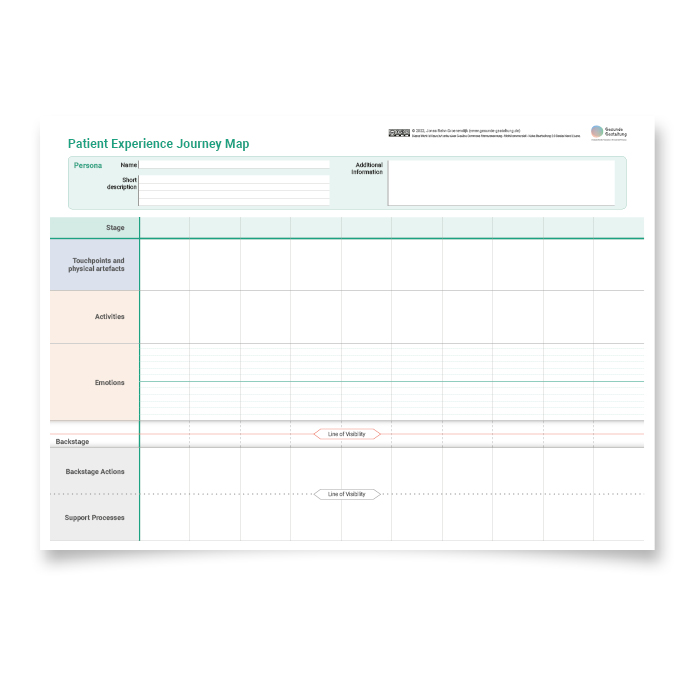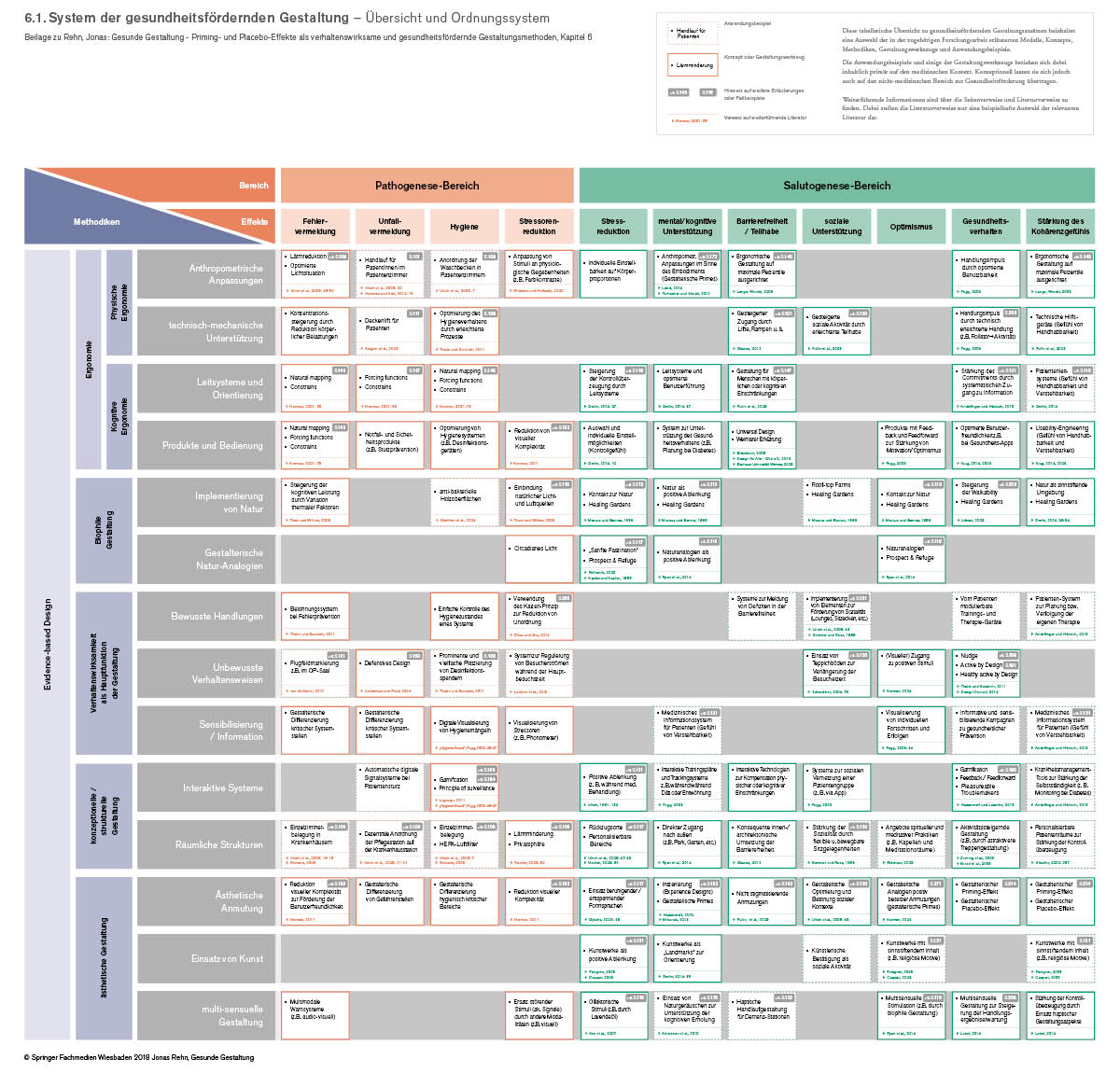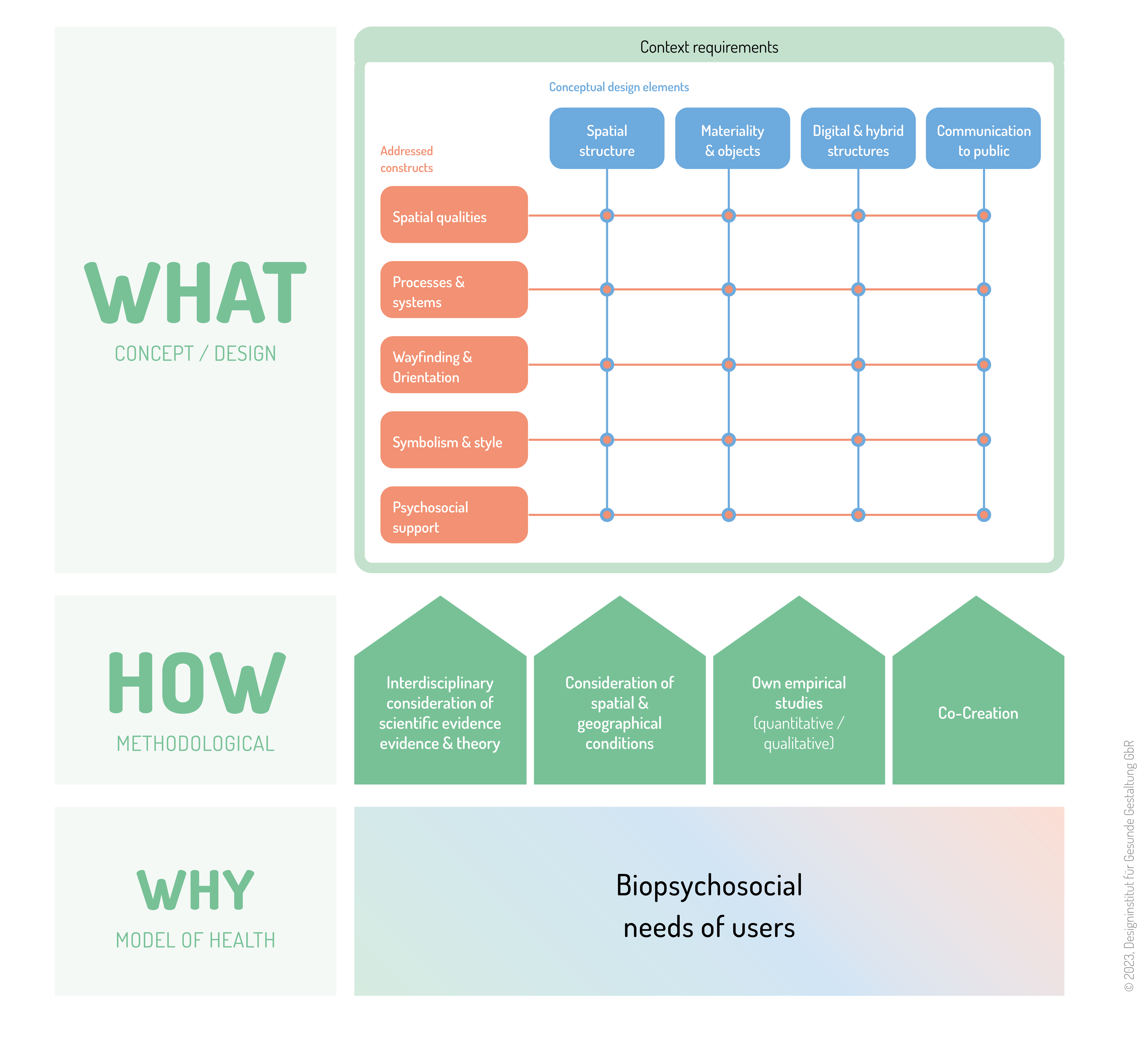Design that aims to promote or maintain health should always be informed design. In this context, consistent and transdisciplinary research plays a significant role. Meanwhile, a wide range of scientific and popular sources is available, both web-based and in print. To get a rough overview of exciting sources, you will find a first selection here.
You know even more? Then get in touch...
Concepts & Approaches
Systemic evidence-based approach of health-promoting design (SEA)
The model presented here describes an evidence-based interdisciplinary approach to the evaluation, design and optimization of spaces, products and systems in the context of health promotion. Its application is not limited to explicit areas of therapy and health promotion (e.g. clinics and medical practices). It can also be used in other contexts (e.g. schools, urban spaces, workplace health promotion) to systematically address the influence of the built environment on health and to optimize these contexts in this respect.
Tools & Templates

Patient Persona Template
This template is intended to serve as a guide for developing patient personas. However, it should always be considered which benefit the personas should fulfill and for which project the method is used. Therefore, it can often be useful to adapt available templates.

Patient Journey Map Template
A schematic framework such as this template can be useful for developing the Patient Journey during workshops or initial conceptual phases. As is often the case with templates, it is important to ensure that the structure and design meet the requirements of the project in question.

Touchpoint Inventory Template
In order to develop coherent multi-channel experiences, it is of enormous importance to systematically record the relevant channels, stages, and touchpoints. Such a touchpoint inventory can be very helpful, especially for patient experience design. The template presented here is intended to facilitate this process.

System of health-promoting design
This table describes a rough overview of relevant topics and methods of health promoting design. It represents a starting point for research and conception.


